- Jewelry
- Crosses
- Rings
- Mens
- Claddagh
- Wedding
- Personalized Jewelry
- John Urban Jewelry
- Sale
- Gift Certificates
- About Us
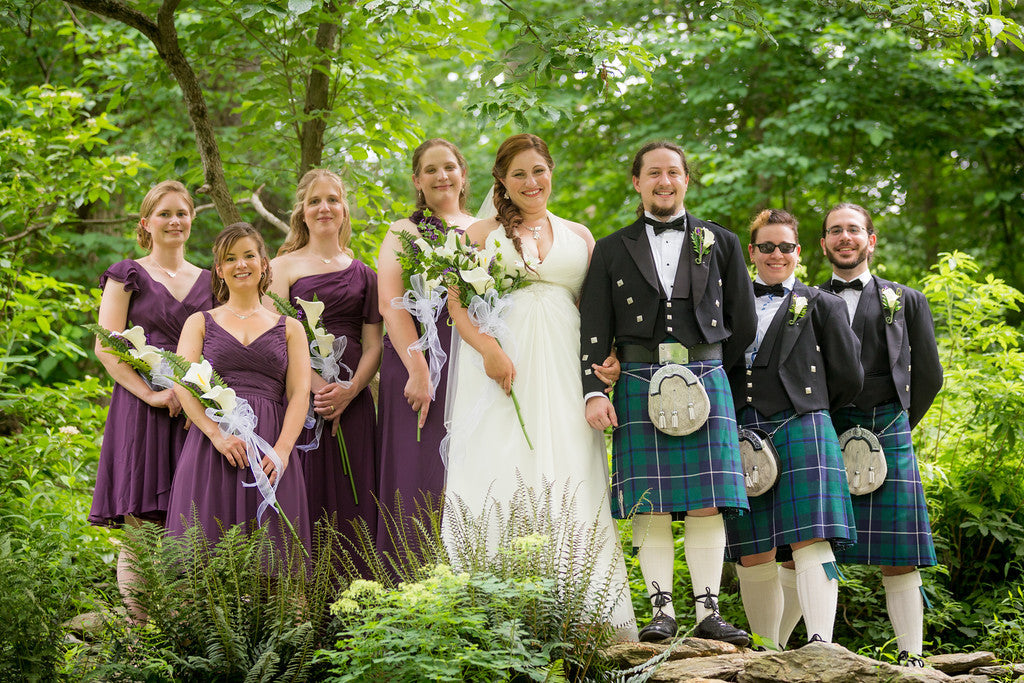

Whether you're looking to infuse a bit of your family's heritage into your special day or just love the design and symbolism of Celtic knots, these traditions are unique and memorable touches that you may want to include in your wedding whether you're of Celtic ancestry or not! In case you need a little help figuring out what's best for you, here's just a little background on five of the most popular Celtic wedding traditions to help you decide what feels most authentic culturally and appropriate spiritually.
(customers Amanda Richards & Bobby Dawson were married at Farmington Castle in Co. Limerick -- photo submitted by the couple)
You're hearing it from the experts at Walker's Celtic Jewelry: you don't have to be of Irish or Scottish descent to wear and love the symbolic interwoven designs of Celtic jewelry!
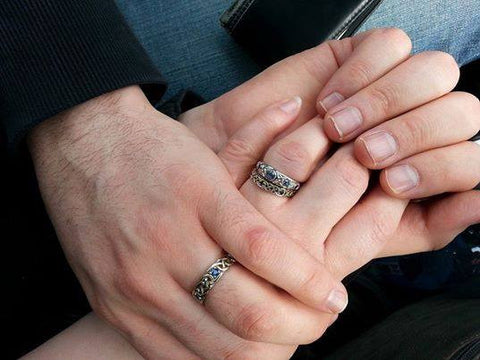 (Left -- our 14k white gold Josephine's knot wedding bands and a custom Celtic engagement ring with sapphires -- photo submitted by customer.)
(Left -- our 14k white gold Josephine's knot wedding bands and a custom Celtic engagement ring with sapphires -- photo submitted by customer.)
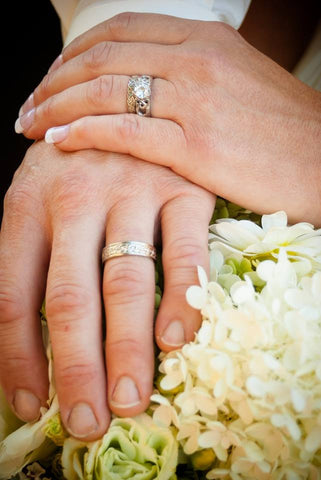
Wedding rings are the traditional gift exchanged at marriage ceremonies in many cultures around the world, and represent eternity -- a perfect circle with no beginning or end. Celtic knotwork bands are symbolic of that promise of eternal love and commitment. Many of our Celtic rings were designed to have continuous knotwork and interlace patterns that represent that unbreakable bond a couple will share through life's similarly meandering paths, twists and turns, ups and downs. The Josephine's knot or "lovers' knot" -- a pattern with two interwoven strands is especially popular for both men's and women's wedding rings. Whether you're planning ahead and so that your engagement ring and wedding bands work together in a matched set, or you'd like to add the beauty and symbolism of a Celtic wedding band to a solitaire you're already wearing, the experts at Walker's can help!
(at right, 14k white gold Josephine's knot wedding bands with our Cathedral diamond engagement ring, photo submitted by our customer Linda McNamara)
Many of our customers love the idea of sharing their family history or love of Celtic design with their family and friends, and choose to give Celtic jewelry and accessories as gifts to their attendants. Necklaces and earrings are popular gifts for bridesmaids -- something special they can wear for your wedding, but they will enjoy wearing any day! If you're wearing the Josephine's knot wedding bands -- we make pendants and earrings in the same pattern, or you may want to coordinate the gemstone color with the dresses or the color palette you've chosen for your wedding. Celtic cuff links or tie bars coordinate well with any formal wear, and make a great gift your groomsmen will be able to use again. If your groomsmen will be donning kilts for the event -- kilt pins would be a functional and appropriate gift!
Your jewelry is not the only place you can incorporate a little Celtic design into your wedding -- many Celtic patterns are not only symbolic of your heritage or the bond you're affirming on your wedding day, but are also a beautiful adornment for your invitations and programs, bouquets and centerpieces, or even your wedding cake. In fact we've gathered a few of our favorite design inspirations on the following Pinterest boards to help you start planning!
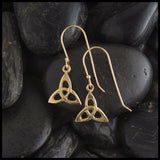 The Trinity knot or triquetra is probably the most recognizable Celtic symbol. In Christian use it represents the Father, Son and Holy Spirit -- but it's also viewed as a wedding knot; a symbol of Christian marriage -- "husband & wife united under God." Through a secular lens, the Trinity knot is still a wedding knot; a continuous strand with it's three points representing the intertwined path between a couple's past, present and future. It's also a symbol of family bonds: the love between parents and their child, or the ties between generations, most often "the three ages of women." (shown at left, gold triquetra knot earrings)
The Trinity knot or triquetra is probably the most recognizable Celtic symbol. In Christian use it represents the Father, Son and Holy Spirit -- but it's also viewed as a wedding knot; a symbol of Christian marriage -- "husband & wife united under God." Through a secular lens, the Trinity knot is still a wedding knot; a continuous strand with it's three points representing the intertwined path between a couple's past, present and future. It's also a symbol of family bonds: the love between parents and their child, or the ties between generations, most often "the three ages of women." (shown at left, gold triquetra knot earrings)
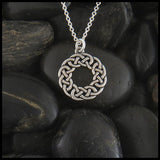 Not only beautiful intricate patterns, but symbolic of your eternal love and commitment to one another -- Celtic knotwork can be used for more than just your wedding rings! Check out a few of these creative ways others have incorporated interlaced Celtic knotwork throughout their wedding's theme. (shown on left, silver Josephine's knot pendant)
Not only beautiful intricate patterns, but symbolic of your eternal love and commitment to one another -- Celtic knotwork can be used for more than just your wedding rings! Check out a few of these creative ways others have incorporated interlaced Celtic knotwork throughout their wedding's theme. (shown on left, silver Josephine's knot pendant)
 The history of the Claddagh as an engagement or wedding ring goes back to the 17th century. The heart symbolizes love, the crown loyalty, and the hands friendship. Today it's also a popular symbol of heritage among Irish-Americans. Claddagh rings or other pieces of jewelry are popular for weddings, but it's also a beautiful symbol to incorporate throughout your Irish wedding. (shown on left, gold Claddagh rings)
The history of the Claddagh as an engagement or wedding ring goes back to the 17th century. The heart symbolizes love, the crown loyalty, and the hands friendship. Today it's also a popular symbol of heritage among Irish-Americans. Claddagh rings or other pieces of jewelry are popular for weddings, but it's also a beautiful symbol to incorporate throughout your Irish wedding. (shown on left, gold Claddagh rings)
 Legend has it that St. Patrick used the 3 leaves of a Shamrock to explain the concept of the Holy Trinity to newly converted Christians in Ireland. It's a symbol of the Catholic saint, but more often a symbol of Irleand, Irish heritage, and Irish pride. You could include shamrocks in your bouquets and centerpieces, gift shamrock jewelry to your friends or wear it yourself, or use it as a design element throughout your wedding decor. (shown on left, Shamrock shield pendant)
Legend has it that St. Patrick used the 3 leaves of a Shamrock to explain the concept of the Holy Trinity to newly converted Christians in Ireland. It's a symbol of the Catholic saint, but more often a symbol of Irleand, Irish heritage, and Irish pride. You could include shamrocks in your bouquets and centerpieces, gift shamrock jewelry to your friends or wear it yourself, or use it as a design element throughout your wedding decor. (shown on left, Shamrock shield pendant)
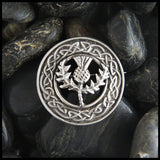 Those of Scottish heritage have certainly heard the legend of Norse invaders attempting to sneak up on a Scottish encampment, stepping on sharp thistles, shouting in pain and alerting the Scots to the attack. The thistle has been Scotland's national emblem since the 1200's and is widely used to denote Scotland and Scottish heritage. We're loving all the rustic thistle boutonnieres and bouquets we're finding on Pinterest! (shown at left, Mary's thistle brooch)
Those of Scottish heritage have certainly heard the legend of Norse invaders attempting to sneak up on a Scottish encampment, stepping on sharp thistles, shouting in pain and alerting the Scots to the attack. The thistle has been Scotland's national emblem since the 1200's and is widely used to denote Scotland and Scottish heritage. We're loving all the rustic thistle boutonnieres and bouquets we're finding on Pinterest! (shown at left, Mary's thistle brooch)
If you have a love of traditional Celtic music you could incorporate it into your ceremony or reception.
 Bagpiping the bride entrance or the couple's departure is the most common use of piping during a wedding ceremony and dates back to the tradition of clan chiefs having personal pipers leading them with ceremonious fanfare. Sometimes a piper will play outside the church as guests arrive or afterwards as the receiving line forms; keep in mind, bagpipes can be very LOUD indoors, so check with your church or venue to see what will be most suitable. You can find a bagpiper almost anywhere in the world at by searching at sites like gigmasters.com or if you are local to Allegany county & Andover, NY we can recommend several accomplished bagpipers (Stephen Walker among them!)
Bagpiping the bride entrance or the couple's departure is the most common use of piping during a wedding ceremony and dates back to the tradition of clan chiefs having personal pipers leading them with ceremonious fanfare. Sometimes a piper will play outside the church as guests arrive or afterwards as the receiving line forms; keep in mind, bagpipes can be very LOUD indoors, so check with your church or venue to see what will be most suitable. You can find a bagpiper almost anywhere in the world at by searching at sites like gigmasters.com or if you are local to Allegany county & Andover, NY we can recommend several accomplished bagpipers (Stephen Walker among them!)
 (Above: Stephen Walker pipes the exit of the bride & groom at his daughter, Maggie's wedding. Left: Celtic musicians entertain at a Burns supper)
(Above: Stephen Walker pipes the exit of the bride & groom at his daughter, Maggie's wedding. Left: Celtic musicians entertain at a Burns supper)
Celtic music at the reception is another great idea. Musicians playing the harp, a hammered dulcimer, flute or fiddle would make a unique nod to your heritage through your entertainment. A ceileigh band that can play for dancing is great fun! Pipers again are frequently engaged to play when the couple arrives at the reception site, during drinks before the meal.
 You're of Scottish ancestry, and proud of it! Why not incorporate a little plaid or wear a kilt in your family's tartan for not only your wedding but other formal events? Kilt rental is becoming increasingly popular, and even if you don't find a local shop providing the service, websites like kiltrentalusa.com will ship your rented kilts so you can easily outfit all your groomsmen. Whether you choose to dress the whole wedding party in your family's specific tartan, you choose a more general regional pattern, or even a solid color, this bold fashion choice will certainly add some rugged Celtic flair to your wedding. (Right, customers Lynnette Fitch & Edward Brash exit their ceremony under swords, photo provided by the couple.)
You're of Scottish ancestry, and proud of it! Why not incorporate a little plaid or wear a kilt in your family's tartan for not only your wedding but other formal events? Kilt rental is becoming increasingly popular, and even if you don't find a local shop providing the service, websites like kiltrentalusa.com will ship your rented kilts so you can easily outfit all your groomsmen. Whether you choose to dress the whole wedding party in your family's specific tartan, you choose a more general regional pattern, or even a solid color, this bold fashion choice will certainly add some rugged Celtic flair to your wedding. (Right, customers Lynnette Fitch & Edward Brash exit their ceremony under swords, photo provided by the couple.)
 During Scottish ceremonies it's also traditional for the bride to exchange her family's tartan for her husband's tartan -- pinned on with a brooch. (left: Lynette Gilmore Crouch & her bridesmaids in tartans, photo provided by the bride.)
During Scottish ceremonies it's also traditional for the bride to exchange her family's tartan for her husband's tartan -- pinned on with a brooch. (left: Lynette Gilmore Crouch & her bridesmaids in tartans, photo provided by the bride.)
 Brooches, rather than engagement rings, were the traditional Scottish betrothal or engagement gift, and Steve created a special brooch for Sue as a gift when he proposed to her, which was then used to pin his family's tartan on to her dress as part of their wedding cermony. (photo from Stephen & Sue Walker's wedding in 1980)
Brooches, rather than engagement rings, were the traditional Scottish betrothal or engagement gift, and Steve created a special brooch for Sue as a gift when he proposed to her, which was then used to pin his family's tartan on to her dress as part of their wedding cermony. (photo from Stephen & Sue Walker's wedding in 1980)
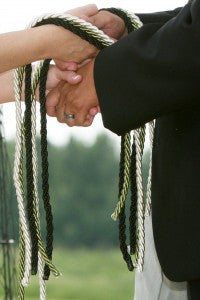 Most likely where the phrase "tying the knot" comes from, handfasting was a rural commitment ceremony practiced in during the 12th-16th centuries in Ireland, England and Scotland, especially in the Hebrides. The term is derived from the verb to handfast, from the Early/Middle Modern English for the making of a contract, but may have been originally borrowed from the Old Norse handfesta which means "to strike a bargain by joining hands." In some locations handfasting was seen more as betrothal ceremony or "trial marriage," and in other areas it was a permanent and legally binding commitment. From the late 1960's to present the term "handfasting" is most often used in Neo-pagan, Wiccan or other earth-based religious wedding ceremonies.
Most likely where the phrase "tying the knot" comes from, handfasting was a rural commitment ceremony practiced in during the 12th-16th centuries in Ireland, England and Scotland, especially in the Hebrides. The term is derived from the verb to handfast, from the Early/Middle Modern English for the making of a contract, but may have been originally borrowed from the Old Norse handfesta which means "to strike a bargain by joining hands." In some locations handfasting was seen more as betrothal ceremony or "trial marriage," and in other areas it was a permanent and legally binding commitment. From the late 1960's to present the term "handfasting" is most often used in Neo-pagan, Wiccan or other earth-based religious wedding ceremonies.
 Today handfasting can be included as part of a religious or secular civil wedding ceremony. The hands of the bride and groom are joined and tied together by the officiant or members of the wedding party with cords or ribbons. Much like the popular "unity candle" today, it's a physical symbol of the couple's spiritual commitment to one another. (A bridesmaid participates in the handfasting during Gail Keefer & Isaac Klingensmith's wedding, this photo and header photo provided by photographer Jeremy Powlus of trustedphotopa.com)
Today handfasting can be included as part of a religious or secular civil wedding ceremony. The hands of the bride and groom are joined and tied together by the officiant or members of the wedding party with cords or ribbons. Much like the popular "unity candle" today, it's a physical symbol of the couple's spiritual commitment to one another. (A bridesmaid participates in the handfasting during Gail Keefer & Isaac Klingensmith's wedding, this photo and header photo provided by photographer Jeremy Powlus of trustedphotopa.com)
I thought handfasting was for a year and a day. That would have cleared a lot of weddings off the books.
Comments will be approved before showing up.
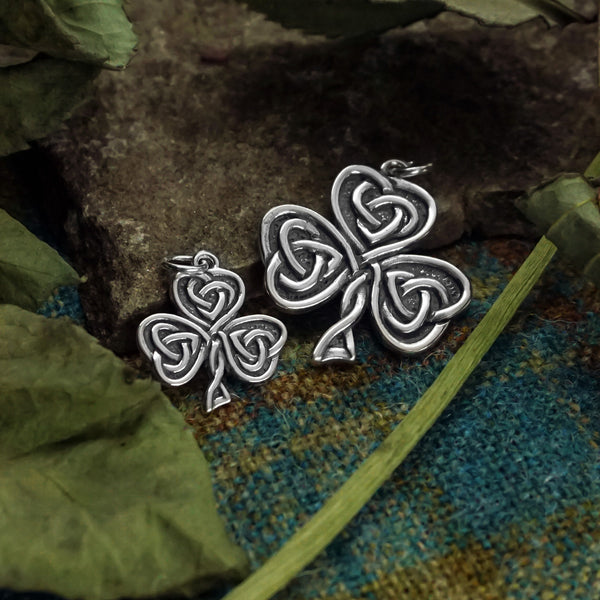
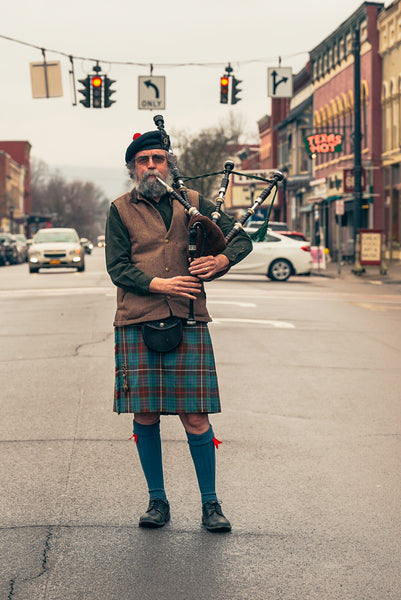
Thousands of photographs were taken. Help find at least one.
Were you a tourist in London, Dublin or Paris in 1975 – 1978? Did you see a street performer playing bagpipes? Did you take his picture? Was it Steve Walker? If you can share that picture with Walker Metalsmiths you could score some sweet Celtic jewelry.
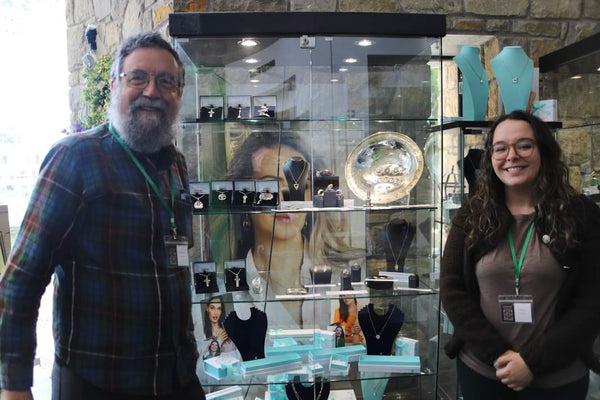
Sandi
January 09, 2019
I thought handfasting was for a year and a day. That would have cleared a lot of weddings off the books.